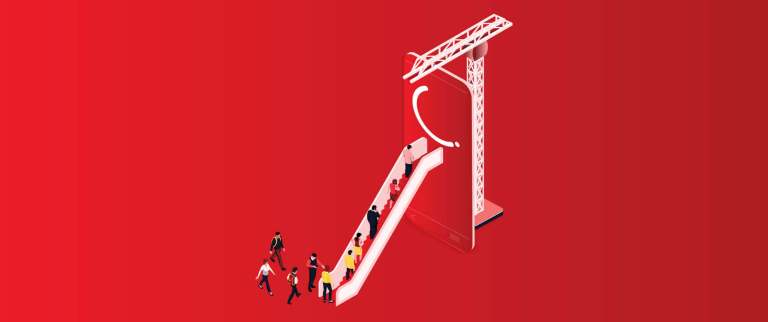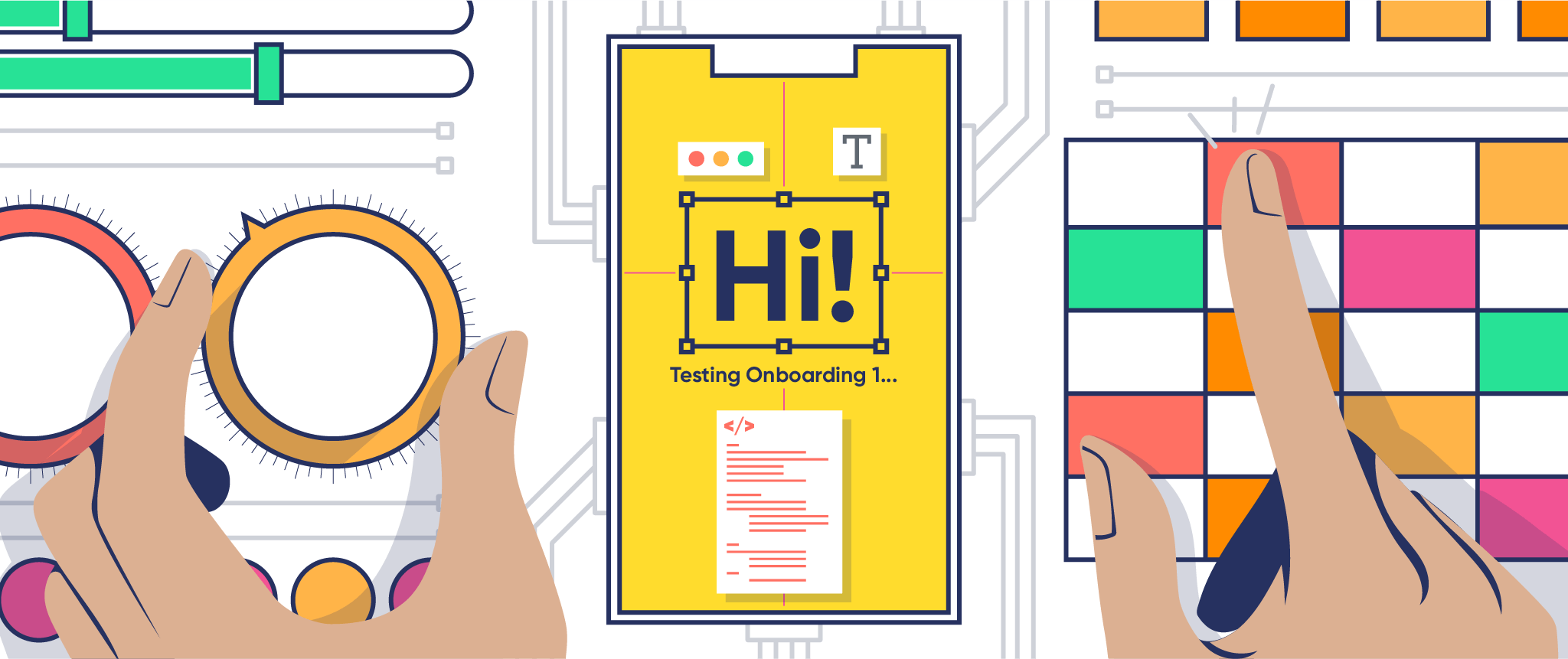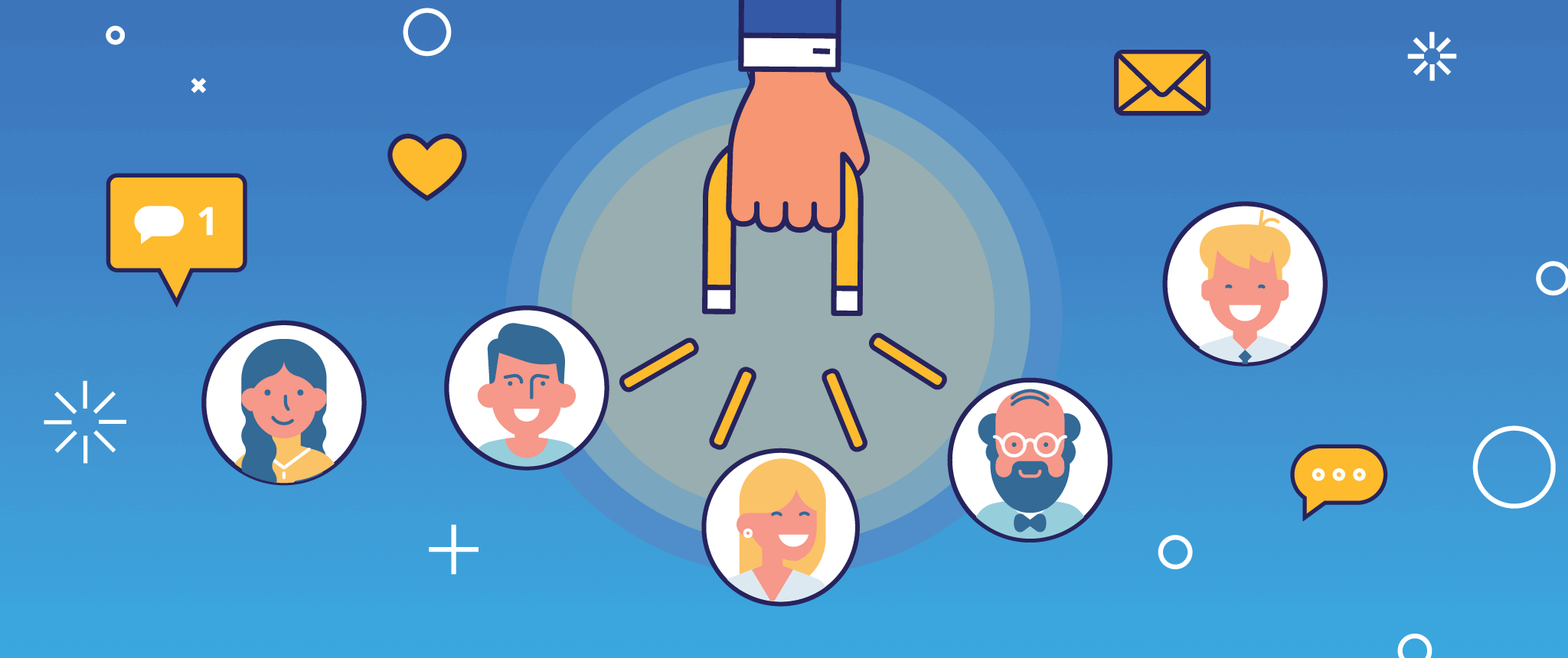Learn how you can Unlock Limitless Customer Lifetime Value with CleverTap’s All-in-One Customer Engagement Platform.

What makes some mobile apps more popular and commercially successful than others? With an estimated 6.6 billion smartphone users worldwide, what does it take for an app to make it big? It’s the user onboarding process! CleverTap’s benchmark reports across industry verticals show a common pattern — companies with user-friendly, simple, and quick onboarding processes are more successful in getting users to complete at least one conversion event in the first 30 days. For example: in Fintech apps, 95% of successfully onboarded users end up adding money to their wallet or buying a mutual fund.
Granted, clever marketing strategies can create enough buzz to convince users to try out a new mobile app. However, once downloaded, will the app pass the “acceptability” test? If the user finds it at all difficult to understand or operate, chances are they won’t use that app again. Moreover, it will have to compete with dozens of other apps already installed on the user’s device.
Users are notoriously fickle when it comes to apps. By now, every mobile marketer knows that you lose 90% of your Daily Active Users in the first 90 days.
But all is not lost; implementing an effective onboarding procedure will help keep users engaged and invested. In fact, our own customers have found that after a good onboarding process, retention rates increased by 30-35%.That’s why improving the onboarding experience is guaranteed to pay dividends over time. (Retention rates refer to an app being opened by the user at least once every 30 days.)
Measuring an app’s success based on the number of times it’s been downloaded isn’t the most reliable metric. The real test lies in determining how many people are indeed using the app and whether they report a positive in-app experience. No wonder then that developers are constantly exploring ways to provide the best possible app onboarding experience for users. To make sure that they fully appreciate what mobile apps can offer, it’s vital to keep users engaged—from the initial download to the first launch, and throughout the app’s use.
Onboarding that demonstrates the value users can expect to get out of the app is more likely to help them become invested. And that amounts to more than simply guiding them through the initial setup. It also involves familiarizing users with the software’s features and benefits—its main selling points. Furthermore, onboarding can nudge users into creating their profiles for a more personal experience.
Of course, not all mobile apps require a lengthy welcome or extensive tutorials with detailed instructions. At the minimum, onboarding should welcome the new user, show them how to customize settings, and provide a walkthrough of essential features. Likewise, information about the app should always be readily available in the form of guides, tutorials, and tips.
Developers usually incorporate automated tasks that provide onboarding assistance upon demand. Considering that one in four users abandon an app after a single use, receiving tips at critical times during onboarding can boost retention rates considerably.
And don’t just limit onboarding to newly installed apps. Every time the software undergoes a substantial update, it’s an opportunity to activate the system, introduce important changes, and highlight new functions.

More than five million apps are available for download at either the Google Play Store or Apple’s App Store. These mobile apps come in different flavors and sizes and offer various possibilities, with each requiring its own set of onboarding guidelines. Simpler, single-purpose mobile apps tend to do best with a straightforward welcome message. However, more complex software likely needs to employ a multi-layered onboarding technique.
At its most basic level, the onboarding journey for mobile apps falls into three distinct categories: progressive, functional, and beneficial. Let’s have a look at each one in more detail.
1. Progressive Onboarding
Progressive onboarding leverages a user-centric approach, which helps the device owner learn more about the app while they’re using it. This approach follows the user as they navigate their way through the interface, displaying essential advice they need to move the onboarding along.
For instance, users may be asked whether they need assistance in creating their first-ever document or project. If they accept, the app will provide a step-by-step guide, directing them to perform a series of tasks necessary to create a new document. During this sequence, the app only shows notifications relevant to the procedure. At the same time, it also disables the use of other non-related elements.
Progressive onboarding works best for users who are new to the app. It also applies to recently updated apps highlighting one or more new capabilities.
2. Functional Onboarding
Similar to progressive onboarding, functional onboarding supplies topical information about an app’s major attributes. Here, a menu-based selection screen encourages the user to learn more about the app’s stand-out features and numerous benefits.
A great example of this functional onboarding is a “what’s new” splash screen display showing recent app updates. Once the user selects an option, the app displays additional data about its new user-friendly attributes.
3. Beneficial Onboarding
As the name implies, beneficial onboarding promotes an app’s benefits to new users. It works in much the same way as functional onboarding, except that it displays a list of benefits instead of the app’s basic attributes. By homing in on these advantages, onboarding can turn the spotlight on the most valuable elements of continued app usage.
Some aspects of beneficial onboarding include extra screens devoted to special promotions, member rewards, or sign-up bonuses. A click of the screen lets users connect with an order page or even begin their registration.
From a developer’s perspective, onboarding sequences for mobile apps involve many complex steps and procedures. These aim to provide the user with additional information in the form of help guides, new feature promotions, and options to customize their app-based interactions.
While many of these onboarding components can be constructive, bear in mind that they might not all be necessary to the process. Mobile apps that overuse certain tools tend to risk alienating their users. For example, repeated prompts to register or share personal particulars can lead to a loss of trust from users who prefer to maintain their current privacy settings.
Help Guides
Specific in-app actions—or even non-actions for a certain length of time—can prompt a helpful popup to appear. An error message display can do the same.
When this happens, users have the option of accessing additional guidance to navigate the app. For example, access to a table of contents, tutorials, or an interactive guide. In cases where a transactional app displays errors or a system failure, it should also offer a link that activates customer service.
New Features Promotion
Promotional aspects figure prominently in functional onboarding. The promotion might display an app’s new or significant features, inviting users to learn more. In some cases, onboarding can also serve as a call-to-action, where users are encouraged to upgrade and unlock new and advanced in-app improvements.
Personalization Options
Personalization options invite users to customize various aspects of the app to their individual preferences. This could be something as simple as changing the color scheme or uploading a profile picture. Alternatively, some users might want to dive into finer detail, incorporating information such as their present location, weather updates, upcoming events, or calendar milestones like birthdays, anniversaries, and more.

Developing an effective onboarding technique for mobile apps requires a lot of thought. For instance, which categories, materials, and relevant details should be included? Overloading a new user with too many particulars can lead to a less-than-optimal result. Moreover, displaying a lot of redundant, unimportant, or overly promotional elements could similarly turn them off.
Here, we’ve unpacked some of the more common mistakes that developers make when designing their onboarding systems. Avoid them at all costs!
It’s not simply about cramming in as many facts as possible. That’s not the main thrust of onboarding. Rather, the focus is on reducing the time it takes to become familiar with the app.
Despite this caveat, many mobile apps are guilty of overstuffing their onboarding with excessive material. This might include a lengthy introduction about new tools, excessive calls to register, or incessant offers to upgrade. As a rule, don’t use onboarding to shill for additional revenue or request private information.
According to a survey by tech resources site Clutch, 72% of users believe that onboarding a new app shouldn’t take more than 60 seconds.*
Not everybody is eager to view a time-consuming tutorial or sign up for a member account. Many users just want to get into using the app without delay, especially if it’s work-related. By not having a “skip” button, you’ll deprive those users of being able to fast-forward to the relevant bits and start using your app. Although non-skippable tutorials exist to ensure correct app usage, you don’t want to stop those who do already know the basics from getting to work right away.
Some mobile apps need specific information about a user to function optimally. This might include location, contact details, and other data needed to personalize the user experience. For instance, sharing your fashion preferences will help to filter the types of clothing ads you’ll see.
At the same time, providing your location will enable the app to identify nearby stores stocking your preferred products. Further, mobile apps should be upfront about requesting private data and whether they plan on sharing this data with other companies. As such, users must have an opt-out for these requests.
An app may request to use some smartphone devices, like the camera, microphone, or speaker. Here, the communication between app and user isn’t always ideal. Perhaps receiving a system prompt is the first time they’ll find out about having to approve changes to their settings. A better route is to be proactive and explain why your app needs access to video and audio devices. The apps are likely to get even more approvals that way.
We all like a little support from time to time, but there is such a thing as being too helpful, especially with mobile apps. Users get annoyed (and sometimes insulted) when tips appear too frequently without any warning. While the developer’s intention might be to provide useful input, the app can lose its novelty pretty fast if annoying popups keep appearing. For some users, fiddling with the app and getting to find out about its features is the best way to get acclimatized. Having an intrusive sprite insistent on helping—whether you need their help or not—is a sure way to send the app into the trash bin.
That’s not to say that some assistance isn’t welcome now and then. However, it pays to use discretion. At the very least, developers should consider adding a “don’t show again” checkbox to disable these popups. This allows the more adventurous users to continue testing out the app intuitively.
Options to personalize mobile apps are nothing unusual during the onboarding process. Nonetheless, asking for too many, seemingly unnecessary details could well encourage the user to abandon the app.
It’s okay for a sports app to ask when you’d like to receive personalized content based on the teams you selected. However, adding a survey about your preferred fan merchandise items is an obvious tell that the app plans to share your particulars with other merchants. Another example would be food apps asking you to drill down your food preferences. Anybody using a food delivery app will tell you that the variety of food choices is what makes these apps popular.

We’ve covered what not to do. Now, let’s focus on the must-haves when implementing the onboarding procedure on your mobile apps. We’ve summarized some of the most effective ways to create a better onboarding experience for every type of user.
Reminding users why they downloaded the app in the first place is a great way to get the ball rolling. For starters, what about an intro screen explaining what users can do with the app? It sounds a lot better than a simple list of app features. Highlighting your app’s value proposition is also a better way of nudging the user to take a more in-depth look at what the app has to offer. Chances are it could even inspire them to check out the onboarding tutorial and take the plunge.
During onboarding, new users need to get a better idea of what happens when they complete a task. For example, after they upload a file, a popup could confirm that their attempt has been successful. This means the user doesn’t have to wait around for confirmation to continue with the next step. At the same time, adding some positive reinforcement to the onboarding process helps to sustain interest.
Rewarding good behavior is closely entwined with the practice of highlighting completed tasks. When applicable, apps can provide rewards or bonuses once a user completes a task. Leveraging gamification can sustain a user’s interest and keep engagement levels high.
In the case of gaming apps, virtual currency bonuses serve to motivate the user to keep on playing. Alternatively, unlocking new levels encourages the user to continue playing. For shopping apps, a discount voucher or free shipping could be the reward for completing the signup procedure.
An in-app onboarding experience could lead to missed opportunities. SMS, push notifications, emails, and social media mentions are all effective channels for letting users know about your mobile app’s many features.
As much as this is good advice, don’t overdo it by flooding your users with multiple emails or multiple reminders that they haven’t used the app for X number of days. The occasional gentle nudge or friendly reminder appears less intrusive.
Sharing tips now and then can also work. Of course, promotional offers are much more effective when the timing is right. Consider offering a signup bonus, free virtual currency, or even a discount voucher. Whatever messages you relay over these channels, moderation is key.
Creating an app account unlocks opportunities for personalization and opens bonus features for users. For example, better choices, integration with social media, easier payment options, and opportunities to collaborate with other users. Whether due to privacy issues or just plain stubbornness, some people would rather delete the app than register. Instead of admitting defeat, why not give these users a glimpse of your app’s full scope with a trial run? Showing them what they’re missing is an excellent way to demonstrate that signing up isn’t such a bad deal after all. Fear of missing out (FOMO) can indeed be a powerful motivator!
Whether it’s during the signup process or a comprehensive tutorial, don’t make the mistake of painting users into a corner. Providing them with a graceful exit instead of a “cancel” button preloaded with warnings about loss of privileges may well convince them to stick around a bit longer. Instead of an outright “cancel,” you might want to consider a “later” button so users can decide to return to the task further down the line. This escape hatch allows commitment-phobic users to continue using the app until they eventually run out of options. By that time, they’ll probably be too invested not to agree.
The sheer number of mobile apps out there means that any new app needs all the advantages it can get. A healthy dose of promotion, good initial reviews from early users, and availability from app stores can give it a fighting chance. However, developers need to remember that the app being downloaded is just the start of the journey. The bigger challenge is getting users to open the app, like what they see, and make it a regular habit.
A carefully planned and designed onboarding strategy is essential to the success of an app. Remember to design the onboarding system with your audience in mind. While tech users may need little more than the most basic introduction before they dive into the app, others might require more in-depth instructions. Finding the right balance ensures that your app is accessible to all types of users. And adding a “skip” or “later” button ensures that you’re accommodating both newbies and techies.
The SafeBoda Story
Creating a simple onboarding route is the best way to keep users interested and engaged. Take, for example, the story of SafeBoda. This Nigerian motorcycle-ride-sharing app helped make boda-bodas—the bicycle and motorcycle taxis common to East Africa—better and safer for both riders and passengers. Using the omnichannel onboarding capabilities of CleverTap, SafeBoda became a household name in the country and is currently relied on by thousands of customers daily for rides and parcel deliveries. New users received the onboarding assistance they needed to successfully navigate the app and make their first transaction. In addition, CleverTap kept in touch with inactive users by reminding them of SafeBoda’s services during rush hours and holidays.
CleverTap is clearly a great tool for onboarding, but that’s not all. It delivers a feature-rich, fully immersive solution to help businesses increase user engagement with their app. CleverTap also provides analytics and insights that identify and track trends, automatically segmenting your user base, creating and managing omnichannel campaigns, and monitoring customer lifecycles.
Learn more about how CleverTap can optimize your marketing strategy, boost your brand, and maximize retention for your mobile apps by subscribing to our blog. Or give us a call, and we’ll be happy to schedule a free demonstration of what we can do for you.
